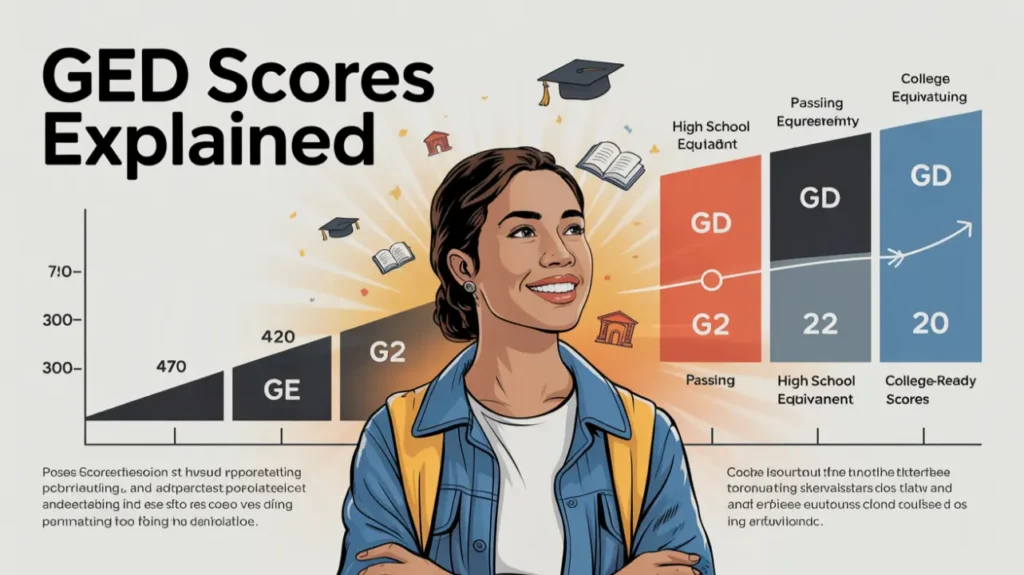
GED Scores Explained: From Passing to College-Ready Levels
Introduction
The GED exam is far more than just a test you need to pass—it’s a powerful stepping-stone to college and career opportunities. Earning your GED opens doors to jobs, vocational training, military service, and higher education that would otherwise be out of reach .
By understanding the different GED score levels—from the basic passing threshold to higher tiers indicating college readiness and potential for college credit—test-takers can set informed, strategic goals. Knowing your target score helps you prep smarter, save time and money, and take full advantage of what the GED credential can offer .
GED Scoring Basics
Scoring Scale
- Each of the four GED subject tests—Reasoning Through Language Arts, Mathematical Reasoning, Science, and Social Studies—is scored on a scaled range from 100 to 200. These scores are not based on raw percentages; instead, they are equated to account for varying test difficulty across different versions.
Passing Threshold
- To pass the GED and earn a high school equivalency credential, you must score at least 145 on each subtest. Falling below 145 on any one test means that subtest must be retaken—even if your total combined score is above the minimum.
Independent Scoring
- Importantly, each subtest is scored independently. There’s no averaging or compensating across sections. For instance, a 170 in Math and a 140 in Science means you must retake Science; strong performance in other areas doesn’t offset it .
Performance Level Breakdown
Level 2 – High School Equivalency (145–164)
- Scoring between 145 and 164 on any GED subject earns you the High School Equivalency credential. This means you’ve demonstrated the skills expected of a traditional high school graduate in that subject—enough to receive your GED diploma.
- At this level, you meet the baseline to pursue jobs, technical training, and college applications.
Level 3 – College Ready (165–174)
- A score within 165–174 signals that you’ve shown college-level capabilities—such as analytical thinking, critical reading, and problem-solving skills.
- Benefits often include:
- Waiving placement tests
- Skipping remedial courses
- Enrolling directly in credit-bearing freshman-level classes, saving you both time and tuition expenses.
- These scores place you well above the median of high school graduates—roughly the 73rd percentile nationally.
Level 4 – College Ready + Credit (175–200)
- Scores from 175 to 200 qualify as College Ready + Credit, showing proficiency matching or exceeding first-year college coursework.
- The GED Testing Service, in coordination with the American Council on Education (ACE), has determined that at this level, test-takers may be eligible to receive college credit—typically up to 10 semester hours distributed across subjects (e.g., up to 3 credits for Math, Science, Social Studies; 1 for Humanities).
- This kind of credit can help you skip introductory courses, accelerating your path to a degree and reducing costs.